What Is Automotive SEO?
Automotive SEO is the use of search engine optimization techniques on car dealer websites. Its aim is to improve organic website visibility, attract more traffic, and ultimately, increase sales.
The process is similar to how SEO works in other sectors, but focuses on optimizing for people actively looking for a car.
This involves a mix of activities that prioritize local SEO, high-quality content production, and technical SEO.
Effective SEO for car dealers should help businesses dominate search engine results pages (SERPs) for informational and commercial keywords relevant to the car-buying journey.
According to a study by Google, 92% of car customers do research online before making a purchase.
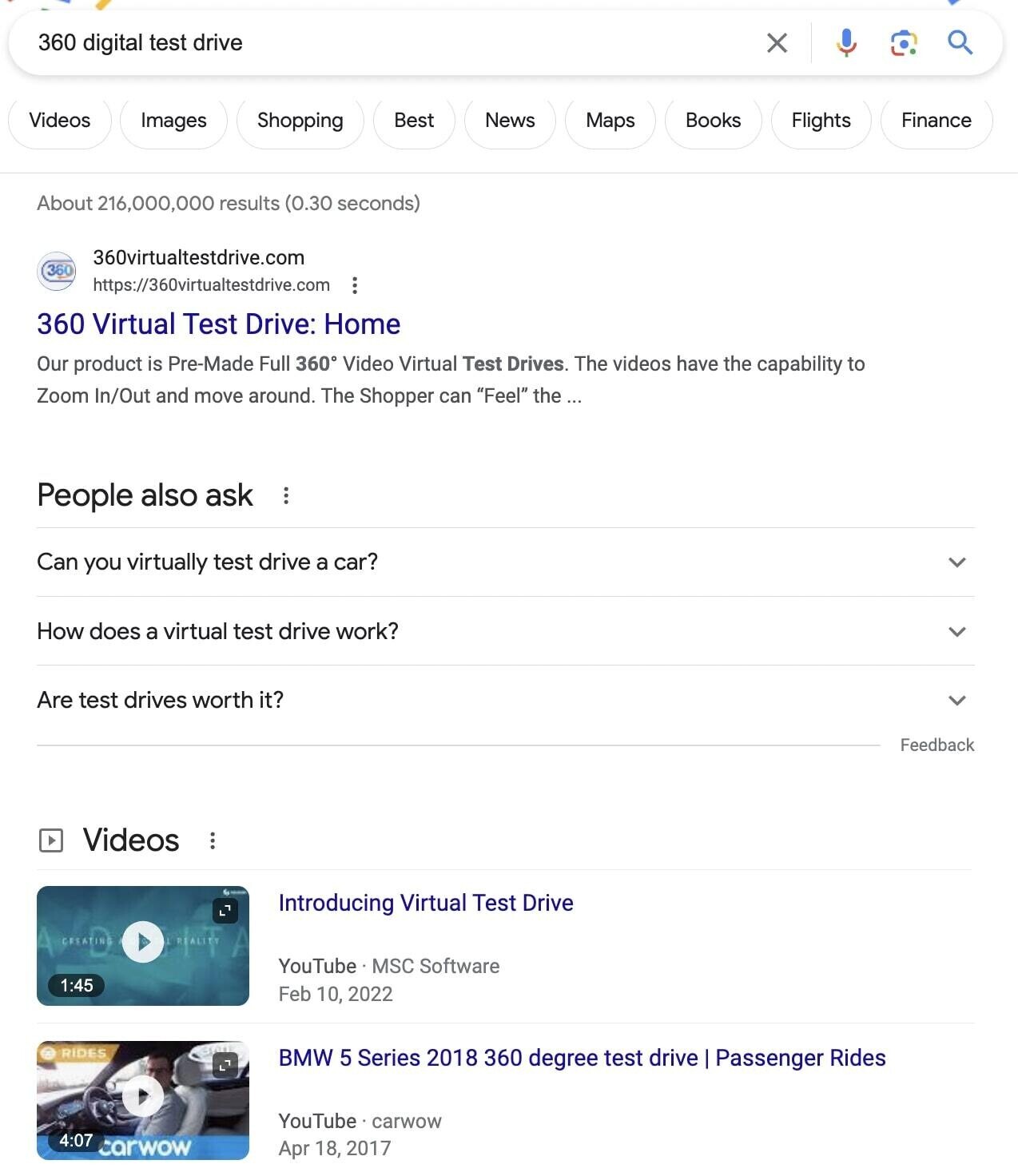
Car dealers that prioritize SEO in their digital marketing efforts can capture customers organically before they make a buying decision. That makes SEO one of the most important parts of marketing strategy for automotive businesses.
The Unique Challenges of Automotive SEO
Successful automotive SEO campaigns can pay huge dividends, but they come with their fair share of challenges, including:
- High competition: The automotive sector is crowded, with over 18,000 dealerships in the United States alone. That means car dealer websites have to fight hard for every keyword position.
- Image-heavy websites: Automotive websites are image-heavy. This presents challenges when optimizing for site-speed—an important factor in both SEO success and user experience.
- The decline of test drives: Google’s study also found that 64% of car customers are willing to buy without a test drive if they can get the same information from a video. This puts the onus on car dealers to meet that need.
- Local optimization: People typically buy cars from their local dealerships. That makes local SEO an important part of a successful campaign, increasing the scope of work.
These challenges are obstacles to strong organic search performance, but can be overcome.
Using automotive SEO tactics will ensure you build and optimize your website for your specific customers’ needs.
12 Automotive SEO Tips and Best Practices
SEO basics all apply in the automotive sector, and should form the basis of your strategy. To increase your chances of succeeding, follow these specific auto dealer SEO tips and best practices.
1. Make the Most of Local SEO
Since most people buy cars from dealers in their local area, car dealership websites should put an emphasis on targeting local audiences.
Local SEO does just this, and it starts with discovering local keywords.
The most important first step for local SEO is setting up a Google Business Profile. This is an essential step to appear in Google Maps searches.
This also gives you a chance of ranking in Google’s “Map Pack.” This SERP feature is displayed above organic search results.
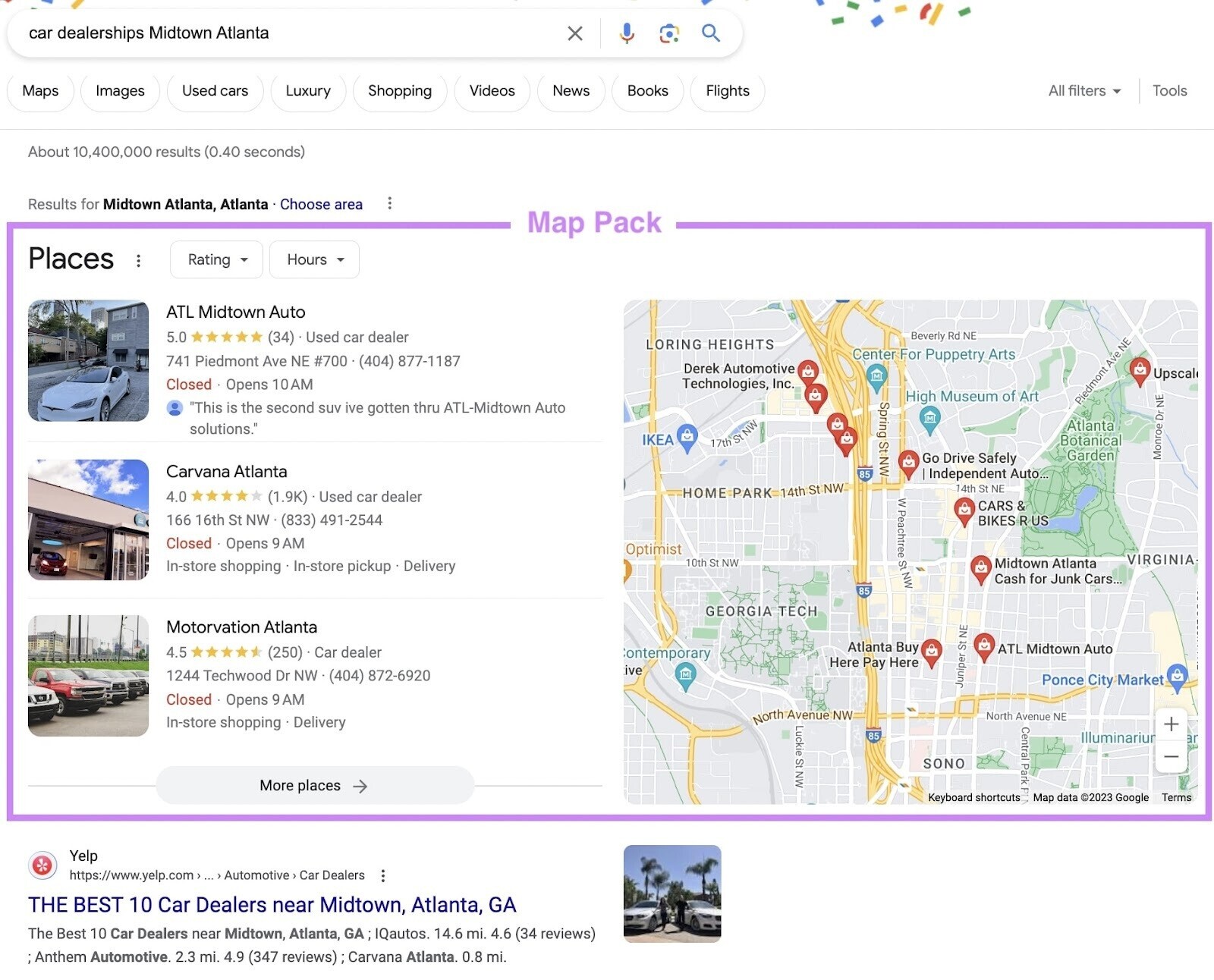
Set up and optimize your Google Business Profile and you’ll be on your way to local search success.
Further reading:
2. Generate Local Backlinks
Backlinks are an important SEO ranking factor, and they go hand-in-hand with local SEO. The more backlinks you have from local websites, the better your site will rank for local keywords.
Relevance is key in determining the power of backlinks. This means the best backlink targets for websites in the automotive sector are:
- Other (non-competitor) automotive businesses in your area
- Local automotive event organizers or communities
- Local automotive publications and newspapers
To find prospects, start with identifying which sites link to your competitors using a tool like Semrush’s Backlink Analytics tool.
Enter a competitor’s URL, click “Analyze,” and click on the “Referring Domains” tab. There, you’ll find a list of all of your competitor’s backlink sources.
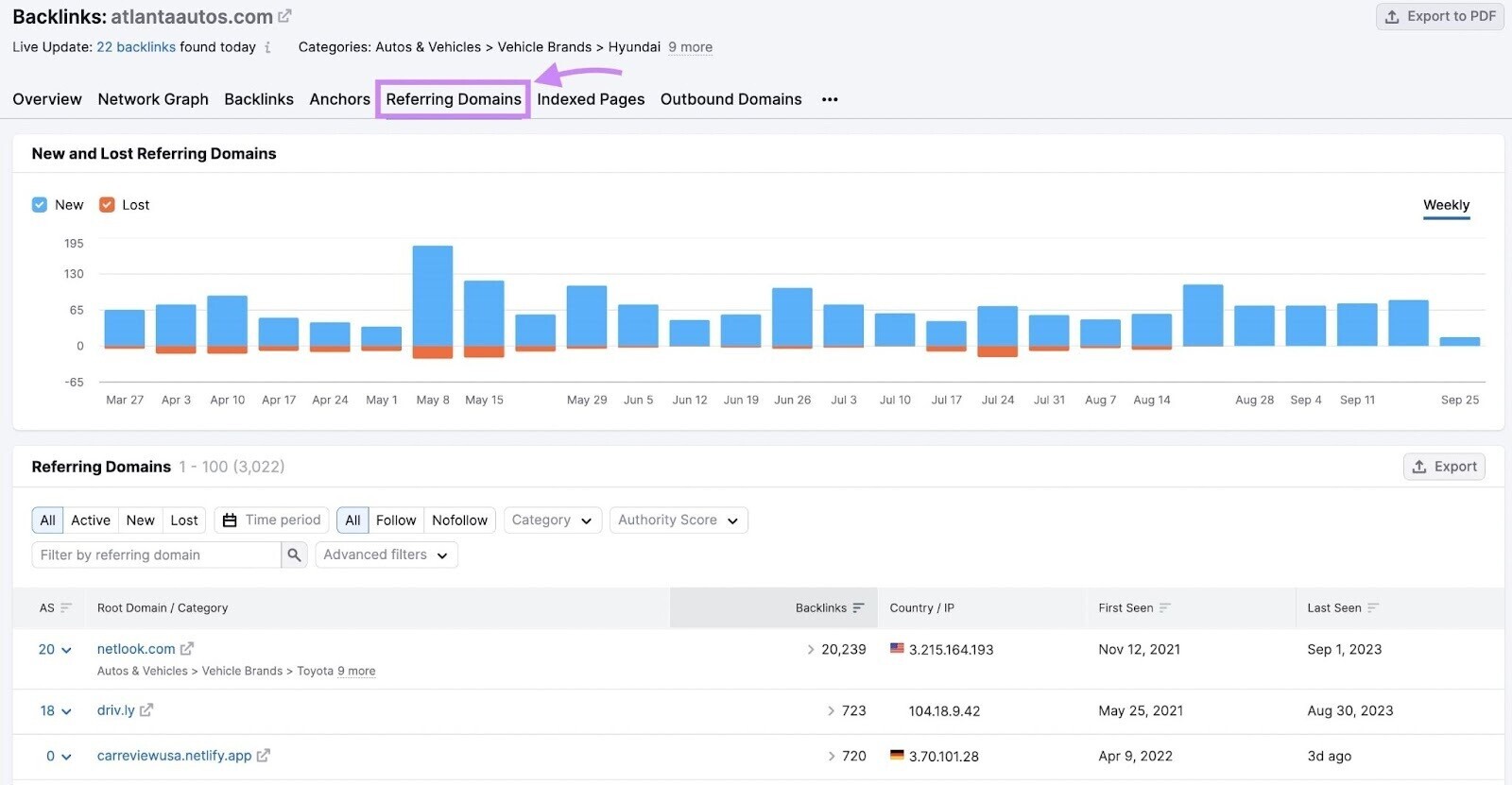
Use filters to trim this list down to domains from your country that are providing active follow links. Export it to a spreadsheet. Repeat these steps for as many competitors as you want.
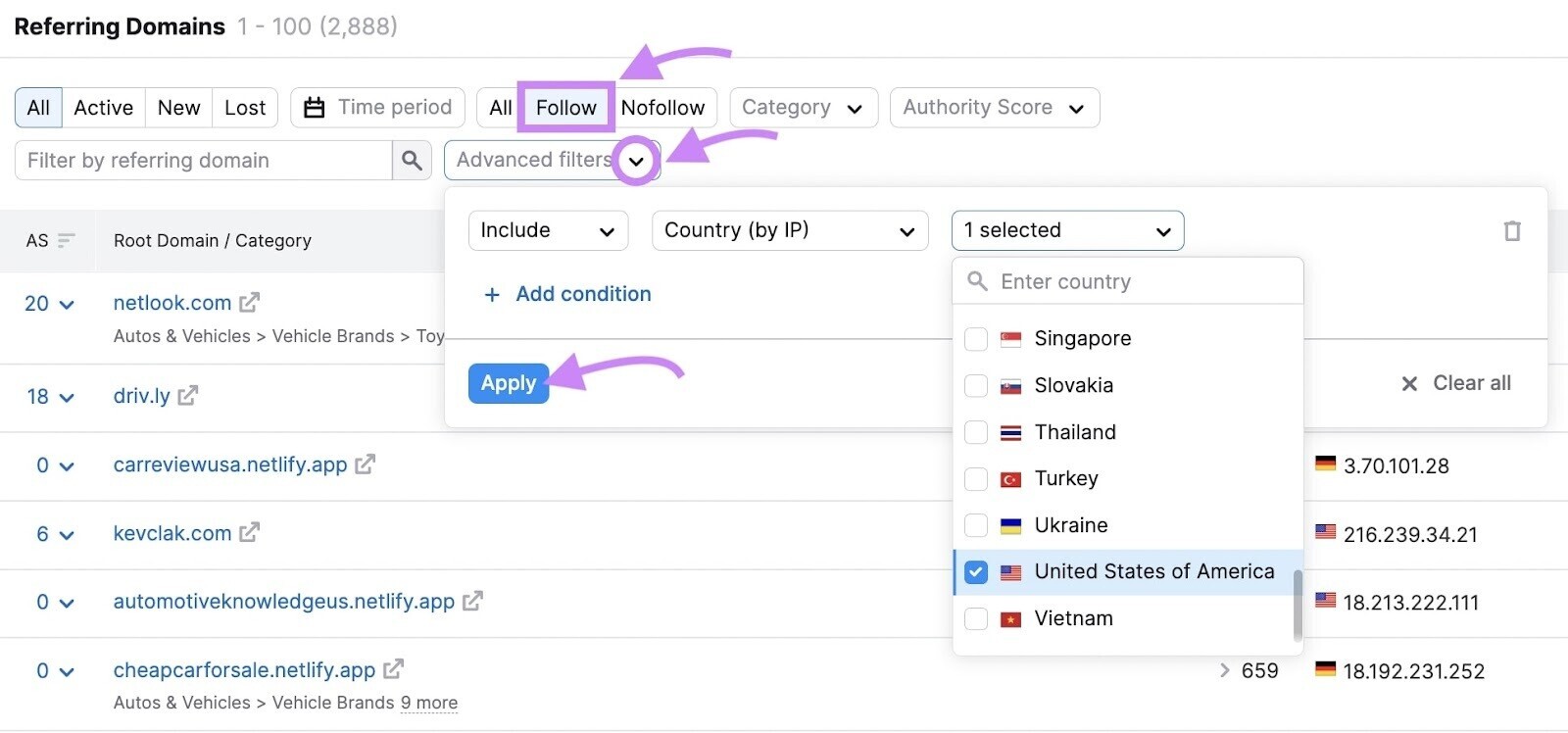
Work through your spreadsheet and identify the most relevant websites to your business. This gives you a list of domains you can target using various link building strategies.
Each link you acquire gives your domain more authority, while also providing a potential source of referral traffic. To get the best results, focus on quality over quantity..
Quality links come from trusted sources, such as websites with a high domain authority or well-known industry leaders.
While high-quality local backlinks are preferable, you can also leverage directories in your backlink strategy. This is as simple as finding relevant online directories and creating business listings on them.
Good initial targets include:
- Yelp.com
- Foursquare.com
- Yellowpages.com
- Local news publications with business directories
Listing your dealership on these websites will bulk out your backlink profile with relevant referring domains, while also helping push leads to your website directly.
3. Build Strong Review Profiles
We did a study to find out if reviews impact local SEO rankings. The number of reviews a Google Business Profile has correlates to its ranking position in Google Maps results.
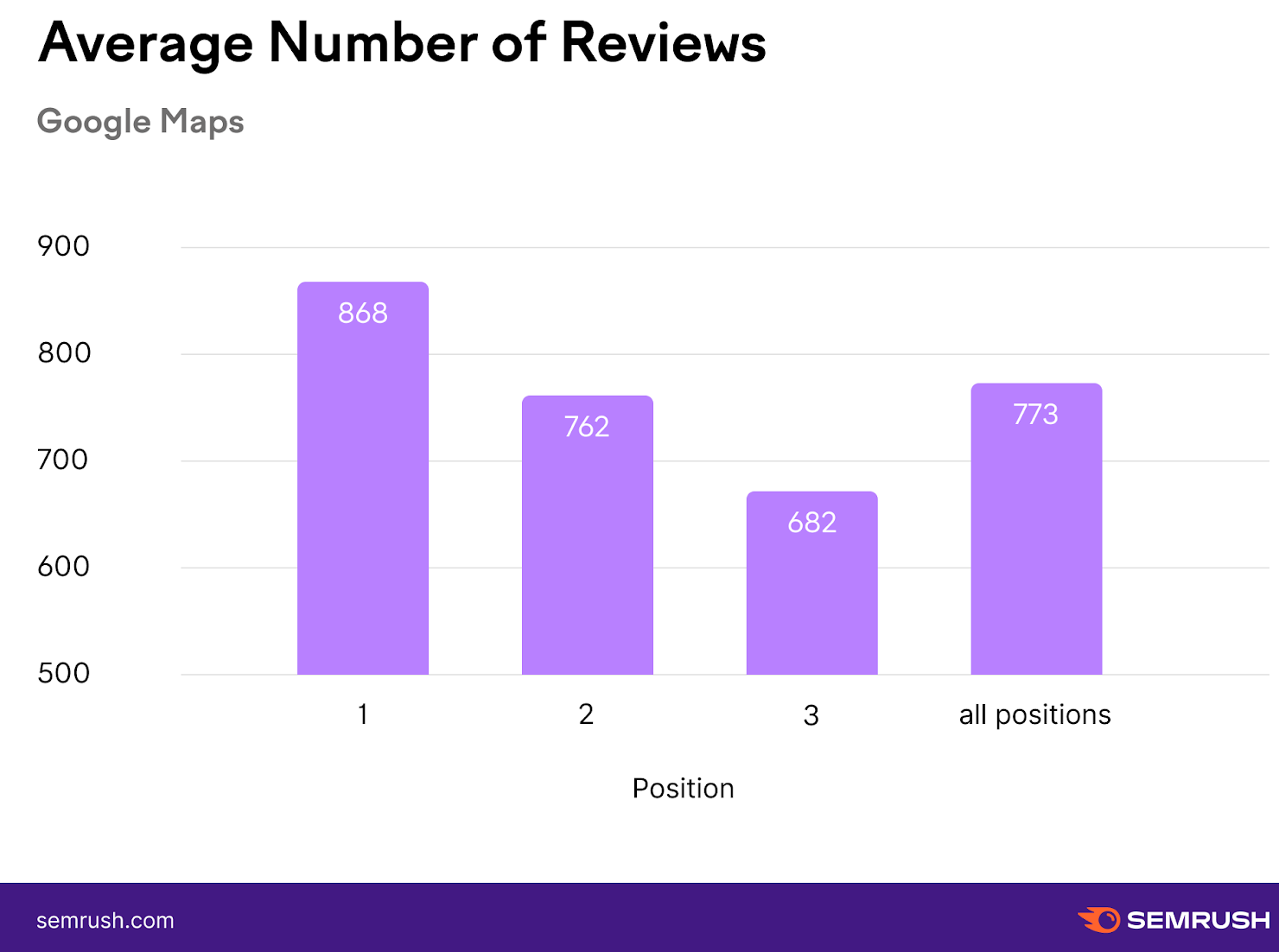
Since Google Maps rankings play a big part in the success of local SEO efforts, securing customer reviews (ideally positive ones!) can be a significant factor in your results.
A strong review profile acts as a measure of trustworthiness to customers and to search engines.
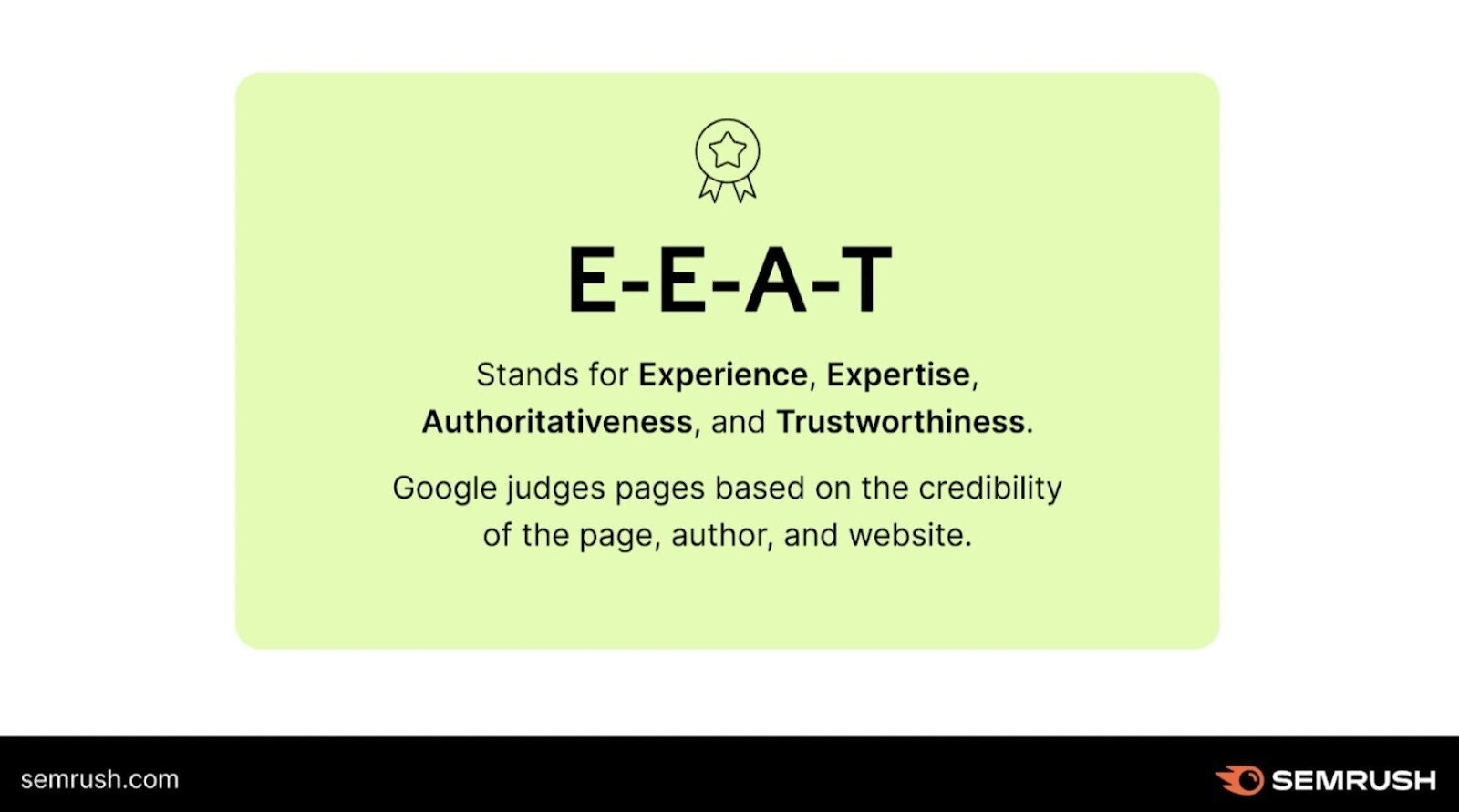
Good reviews aren’t just about SEO, though. Research shows displaying them on product pages affects purchase decisions, especially for expensive products like vehicles.
4. Prioritize Long-Tail Keywords
Car dealership SEO is competitive in densely populated areas like major city centers. Achieving first page rankings for lucrative local keywords can be difficult. Prioritizing long-tail keywords is a way around this problem.
Long-tail keywords are highly specific terms that have lower search volume than short-tail keywords. When added together, they can make up a significant chunk of the total search volume in an area.
For car dealers, targeting long-tail commercial keywords means getting specific on the features of individual vehicles.
For example, it might be difficult to rank in the top results for a short-tail local keyword like “Ford dealer Atlanta.”
Instead, you could focus on targeting long-tail keywords with model-specific product pages. These targets might include keywords like “new Ford Mustang Atlanta” and “new Ford Explorer Atlanta.”
You can use Semrush’s Keyword Magic tool to find long-tail keywords for your business.
Search for the brand of car you sell followed by your location, and scroll through the results. Pick out long-tail keywords that match your products.

You can use these keywords to guide on-page optimization for your category and product pages.
5. Embrace a Deep Site Structure
Site structures can be shallow or deep. A shallow site minimizes the number of clicks it takes to get to the deepest part of the site.
Because of the number of vehicles and features dealerships have, it’s common to use a deeper site structure for organization. This also lets you target your long-tail keywords easier.
Using the keyword examples above, a section of your site’s URL structure might look like:
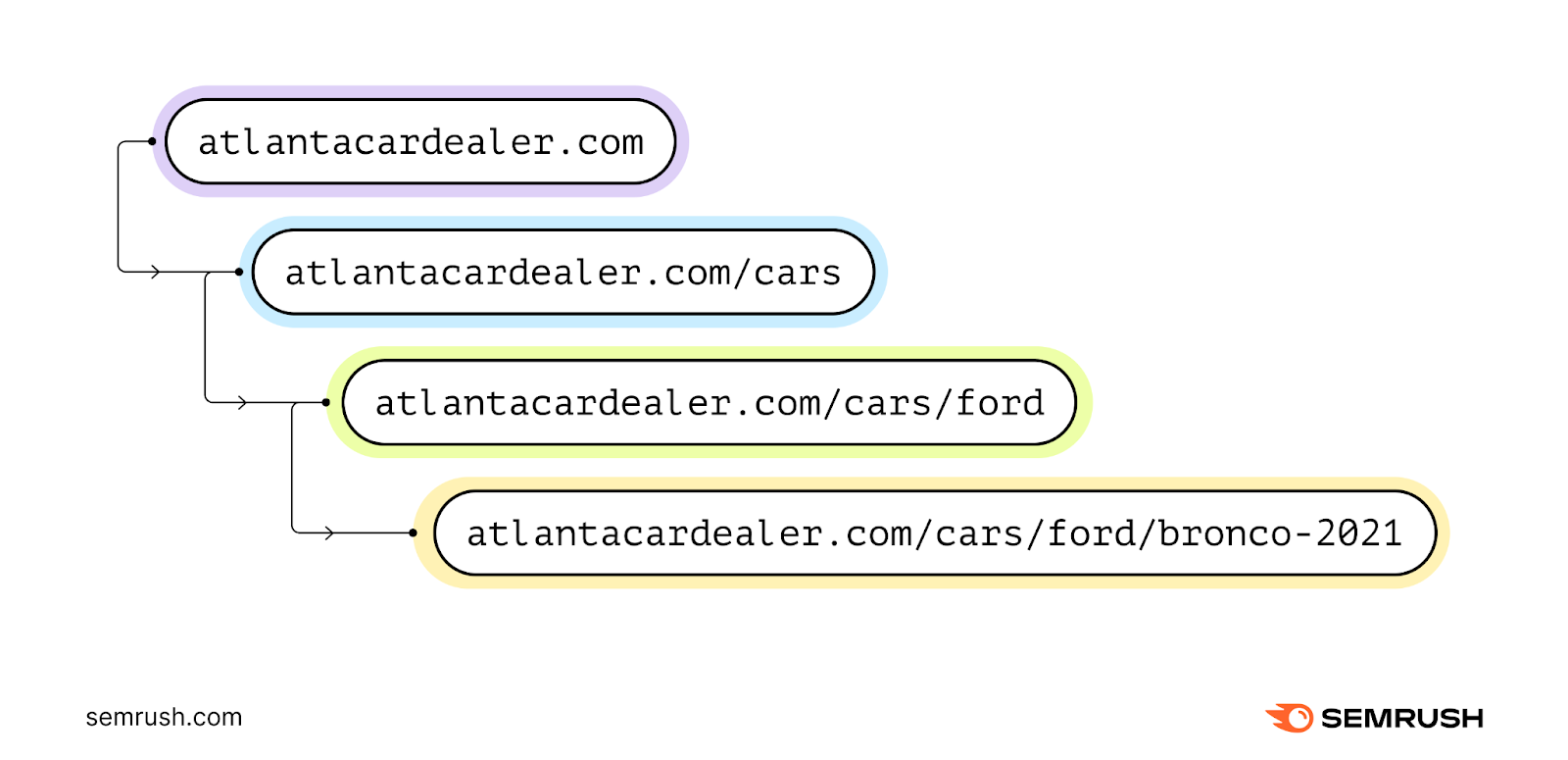
The homepage targets your primary keyword (“car dealer Atlanta”), the next page would target slightly more specific keywords (“new cars Atlanta”), and so on.
By the time you reach the bottom of the site structure, you’ll be targeting low competition long-tail keywords with highly relevant web pages.
Just remember, it’s important to maintain strong user navigation paths. Building a deep site structure without considering how users (or Google’s crawlers) will reach the lowest pages can harm your SEO.
Your site architecture affects Google’s ability to understand your website and how to navigate it. The more disorganized your website is, the harder it is for Google to understand the links between each of your pages.
Users want a site that’s easy to navigate, where they can easily find what they want. If you put a page in a confusing or illogical place, they may leave and spend their money with a competitor instead.
6. Leverage Internal Links
Internal links facilitate navigation around your website. The more complicated your site structure, the more important it is you plan your linking strategy carefully.
There are some basic rules to follow with internal links, including:
- Write anchor text that accurately describes the content on the page being linked to
- Link to your most important pages from a main sitewide navigation bar
- Use breadcrumbs to allow users to navigate back up the site structure
- Ensure every page has at least one internal link pointing to it to avoid orphan pages

In both shallow and deep site structures, internal links should give users a direct path to individual product pages. They can also offer gateways to other sections of the site.
This is especially relevant in car dealer SEO because two-thirds of car buyers don’t know the exact model they want to buy at the start of their journey. Internal links connecting category pages can help facilitate intra-site hopping, giving users new paths to explore.
There are lots of tools you can use to audit your site’s internal linking structure, including Semrush’s Site Audit tool.
To use it, open the Site Audit tool, click the blue “Create project” button, type in your domain, then click “Create project.”
Or, if you already have a project, select it from the list in Site Audit. It will take you here:
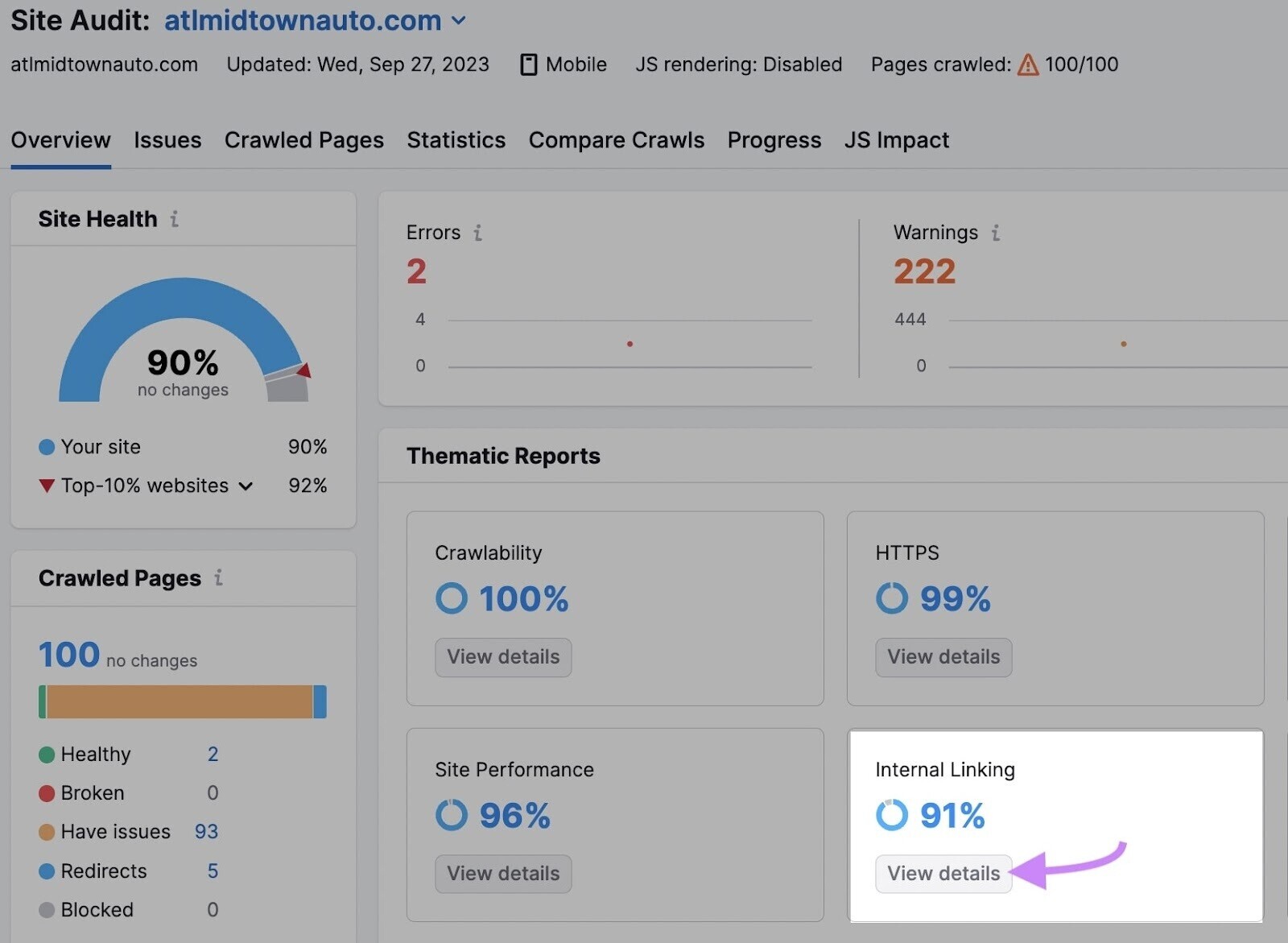
Use it to find unlinked pages, view internal link distribution, fix broken internal links, and more.
7. Deliver a Great Mobile Experience
Mobile search is increasingly dominant, with over 60% of all searches coming from mobile devices. This trend is the reason Google switched to mobile-first indexing in 2020.
This means Google predominantly uses the mobile version of a website for indexing and ranking pages. As a result, designing websites for mobile devices should be your priority.
This is especially true in the automotive sector, where 71% of customer touchpoints are on mobile devices.
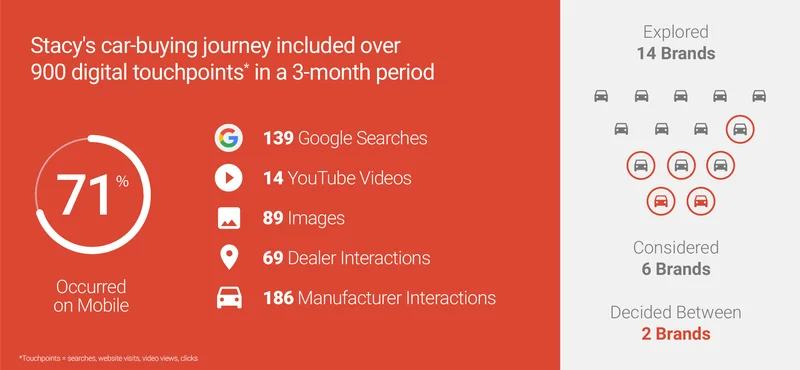
Image source: Think with Google
To ensure the success of your automotive SEO strategy, you’ll have to deliver a great mobile experience. Mobile SEO revolves around the following core principles:
- Use responsive design to make page elements respond dynamically based on the device being used
- Design content with mobile users in mind: keep paragraphs short, make sure text is legible on small screens, and use white space to improve page-viewing experience
- Avoid intrusive pop-ups that cover the main page content and detract from user experience
- Optimize for site speed and Core Web Vitals using mobile scores as your primary metric for success
Google Search Console has a section dedicated to analyzing mobile usability. It provides insights into where your website falls short from providing an ideal mobile experience.
To find it, visit Google Search Console. Under the Experience tab, click “Mobile Usability.”
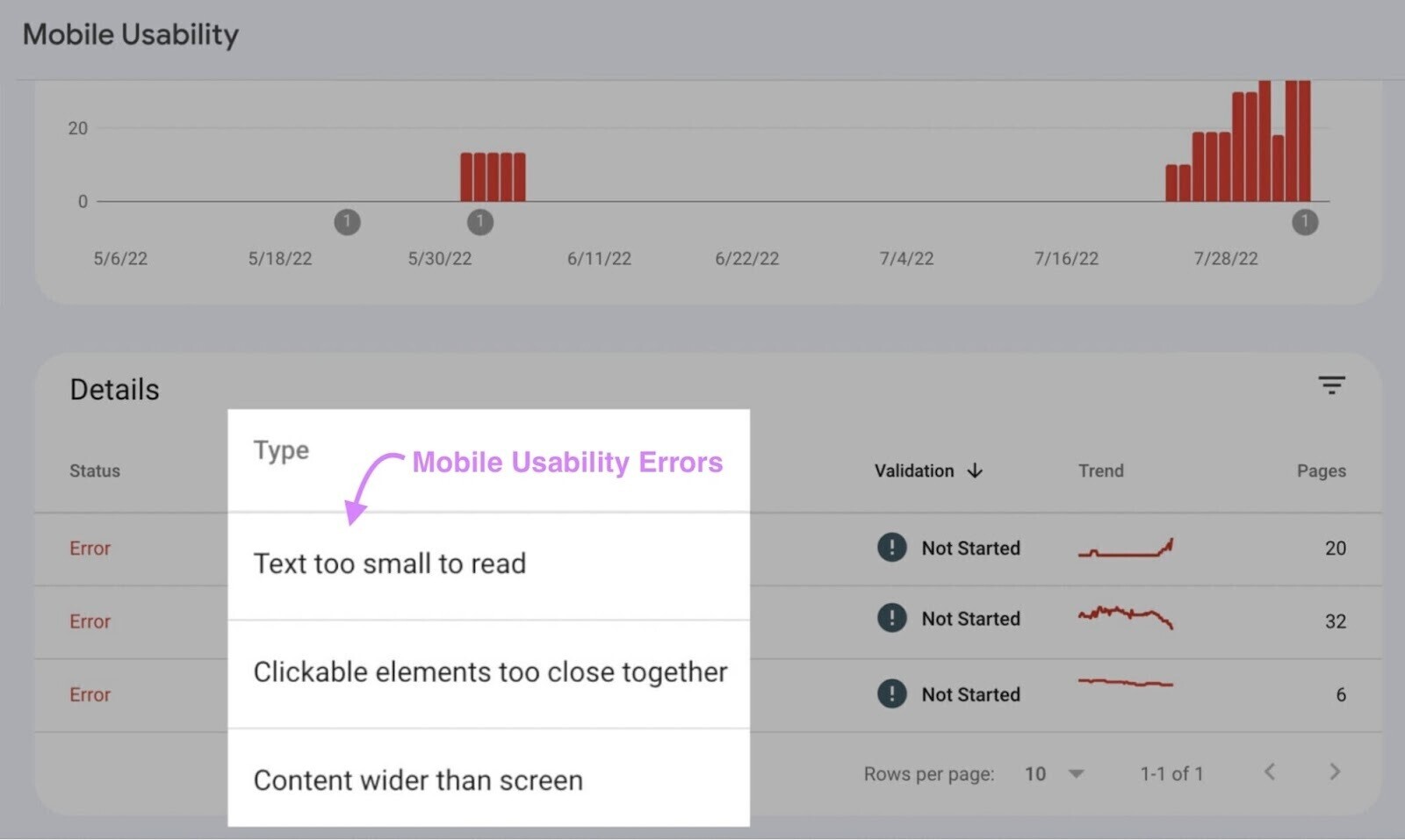
If you don’t have access to Google Search Console, you can use Google’s Mobile-Friendly Test tool instead. Just remember, you’ll have to test pages one by one.
8. Use Relevant Schema Markup
Schema is a structured data language used to help search engines understand the content on webpages. Using it on your website can transform your SERP listings into rich results which display review stars, product specifications, and more.
Schema markup covers many categories. But for automotive SEO, there are a few types that really matter:
- Auto: Classifies popular vehicles like cars and motorcycles with an emphasis on retail market features such as seating capacity, speed, and engine type
- Local Business: Defines business details like opening hours, ratings, and address, which can be pulled to rich results in SERPs
- Product: Captures product information or specifications, including dimensions and price, appearing beneath SERP listings for relevant pages
There’s no evidence that Schema markup will boost your rankings, but it can improve click-through rate. Getting rich results also means your website takes up more space in the SERPs, pushing your competition further down (or off) the page.
Google has a Structured Data Markup Helper that will help you create markup for your website. You can also use a car Schema generator.
While adding structured data is not as simple as changing a meta description, it can help you gain an edge for competitive keywords.
Further reading:
9. Maintain Your Site’s Technical Health
Without regular maintenance, all sites eventually suffer from technical SEO degradation. However, car dealer websites are prone to tech issues because of their diverse and rotating inventory.
Technical issues like pages returning a 404 status code, duplicate content, and internal link issues can all cause SEO problems if they’re not addressed regularly.
Monitoring and rectifying these issues one by one is both difficult and time-consuming. The best solution is to run regular comprehensive technical SEO audits.
Using a tool like Semrush’s Site Audit tool can help you automate this process. You can change the site audit settings or leave them as-is, then click “Save.” The audit will start automatically.
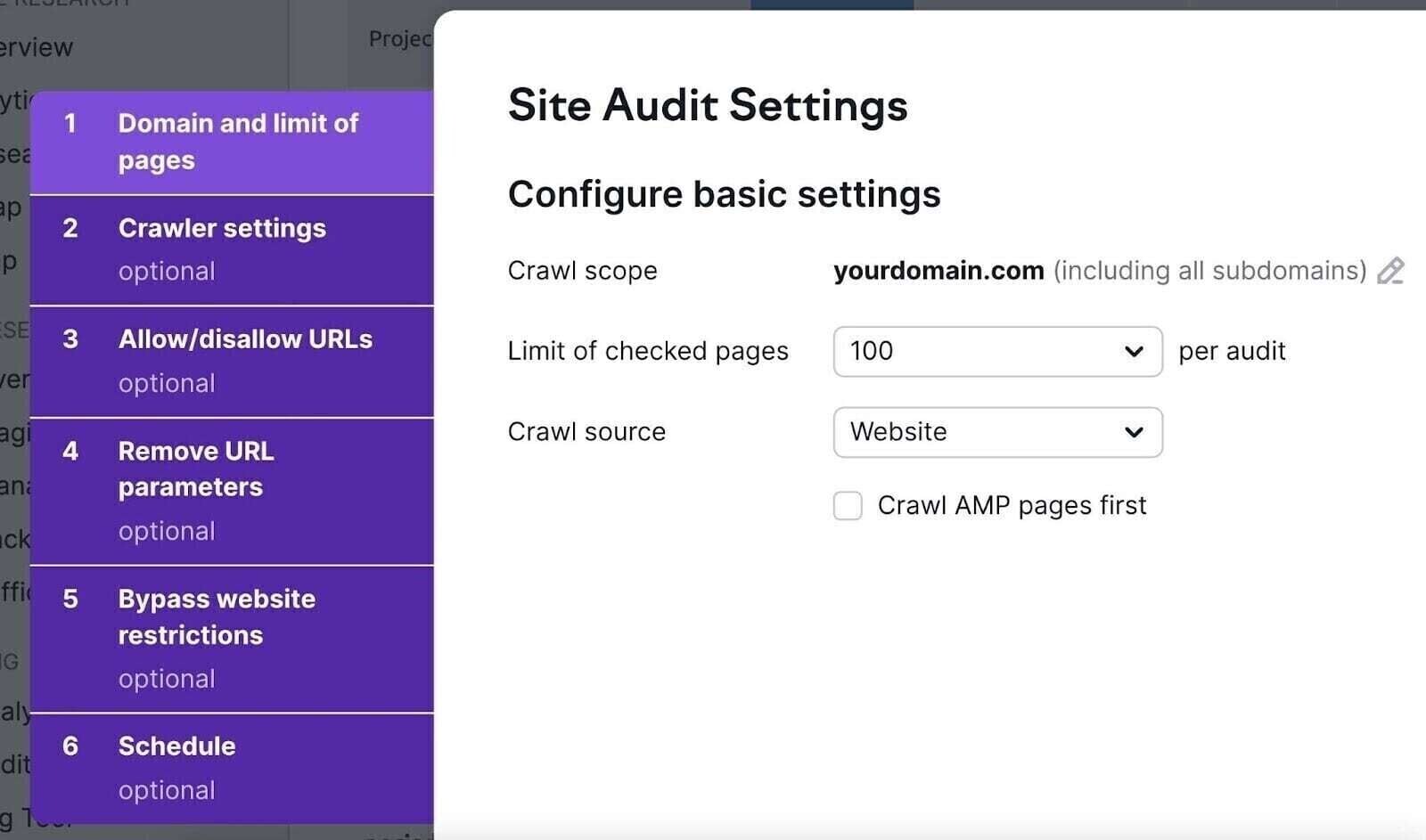
When the crawl is complete, you’ll see an overview of your website’s technical health. The audit tool will flag errors, warnings, and notices. You can also view custom reports covering crawlability, internal linking, and more.
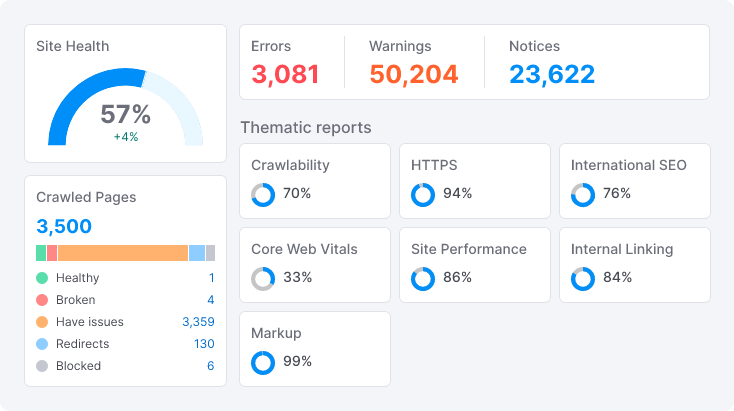
Fixing these issues will make sure your website is free from errors that impact SEO performance. It’ll also help make sure your potential customers don’t run into broken links or missing pages.
10. Get Detailed on Product Pages
The online portion of the car buying journey inevitably ends on a product page. Getting specific with product page content maximizes the chances of users converting on your site, rather than a competitor’s.
Vehicles are high-value items. Customers are likely to have questions before buying. It’s the product page’s job to answer them.
Aim to pre-empt all concerns a user might have about a purchase decision.
Questions might include:
- Whether the car has good reviews
- How long the warranty lasts
- What the car feels like to drive
- If the car has enough cargo space
These ideas can feed directly into product page content, inspiring:
- Integrated customer review feeds
- Standard warranties and upgrades
- Video of a test drive experience
- Detailed specifications and measurements
You can add FAQs to product pages, write blogs, or even make videos to answer customer questions.
Video content is especially valuable for helping potential customers visualize the outcome of their purchase. There’s clear demand for it: the watch time of test drive videos is growing and top YouTube results have hundreds of thousands of views.
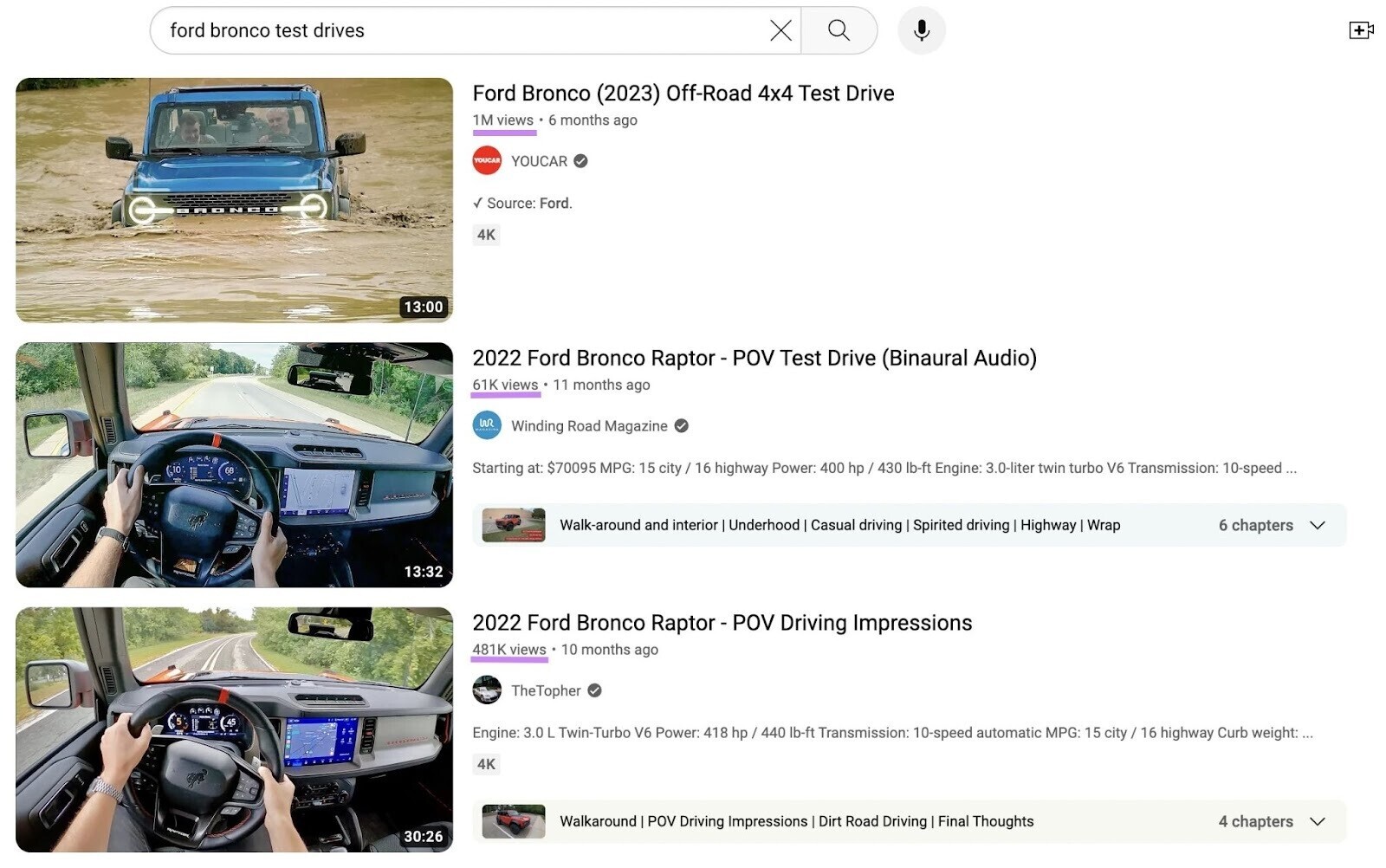
11. Create High-Quality Content
A 2021 report found car buyers spend 12.5 hours researching their options, and an earlier study discovered they visit over four websites on average. You can capture these searchers early in their buying journey with informational content.
Buyers are hungry for knowledge. Well-crafted blog posts or articles targeting keywords they’re likely to search for can put you in front of them.
To make sure your content marketing output contributes to your SEO performance, make sure you’re tackling the right topics.
The first step is thinking about what car buyers might want to read, such as:
- Explanations of common car features
- Reviews of specific car ******
- Comparisons of similar car ******
You can use Semrush’s Keyword Magic Tool to discover what keywords people search to find information about these topics.
Enter a seed keyword (a broad, catch-all term) such as “best Ford,” and hit “Search.”

On the next page, you’ll see a list of keyword suggestions that relate to the seed topic, as well as a sidebar listing the most popular subtopics.
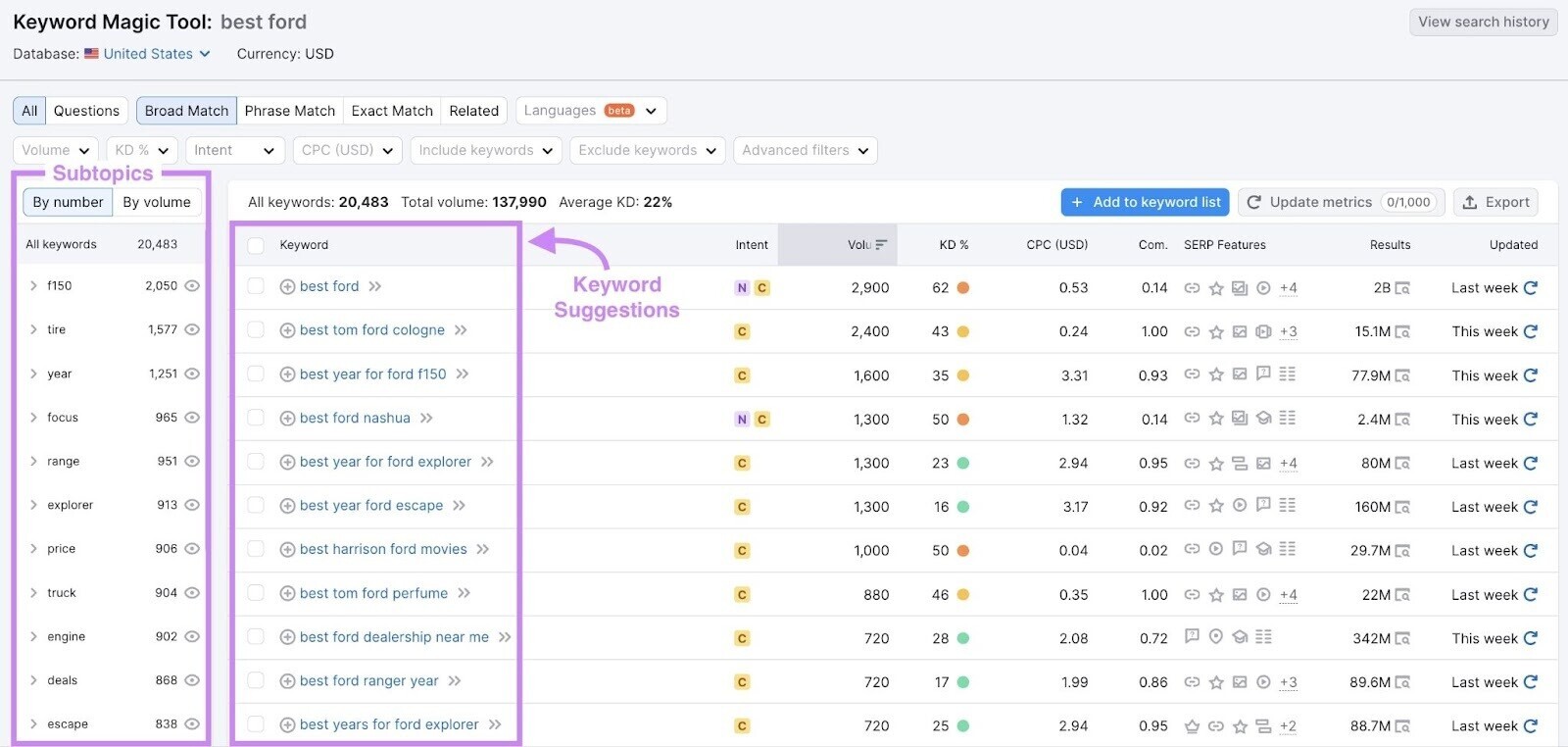
Filter through these keywords, picking out ones that have a high search volume and low keyword difficulty (KD). These are keywords that will bring traffic to your site that you’ll have a good change of ranking for.
The same competitor research approach described in the first step also works here, as long as the competitor sites you analyze have informational content.
The next step is to write interesting, valuable content based on the keywords you’ve found. This can be on product pages, blog articles, or anywhere else on your site that’s relevant.
12. Measure Telephone Call Conversions
Data shows that car buyers overwhelmingly make first contact with their chosen dealership by phone. To understand the return on investment (ROI) of your SEO efforts, make sure you have proper call tracking set up.
There are several ways to do this. The simplest is using Google Tag Manager to create event triggers.
You can set these up to fire any time someone calls you by clicking a phone number on your website. This will show up in Google Analytics as a goal completion.
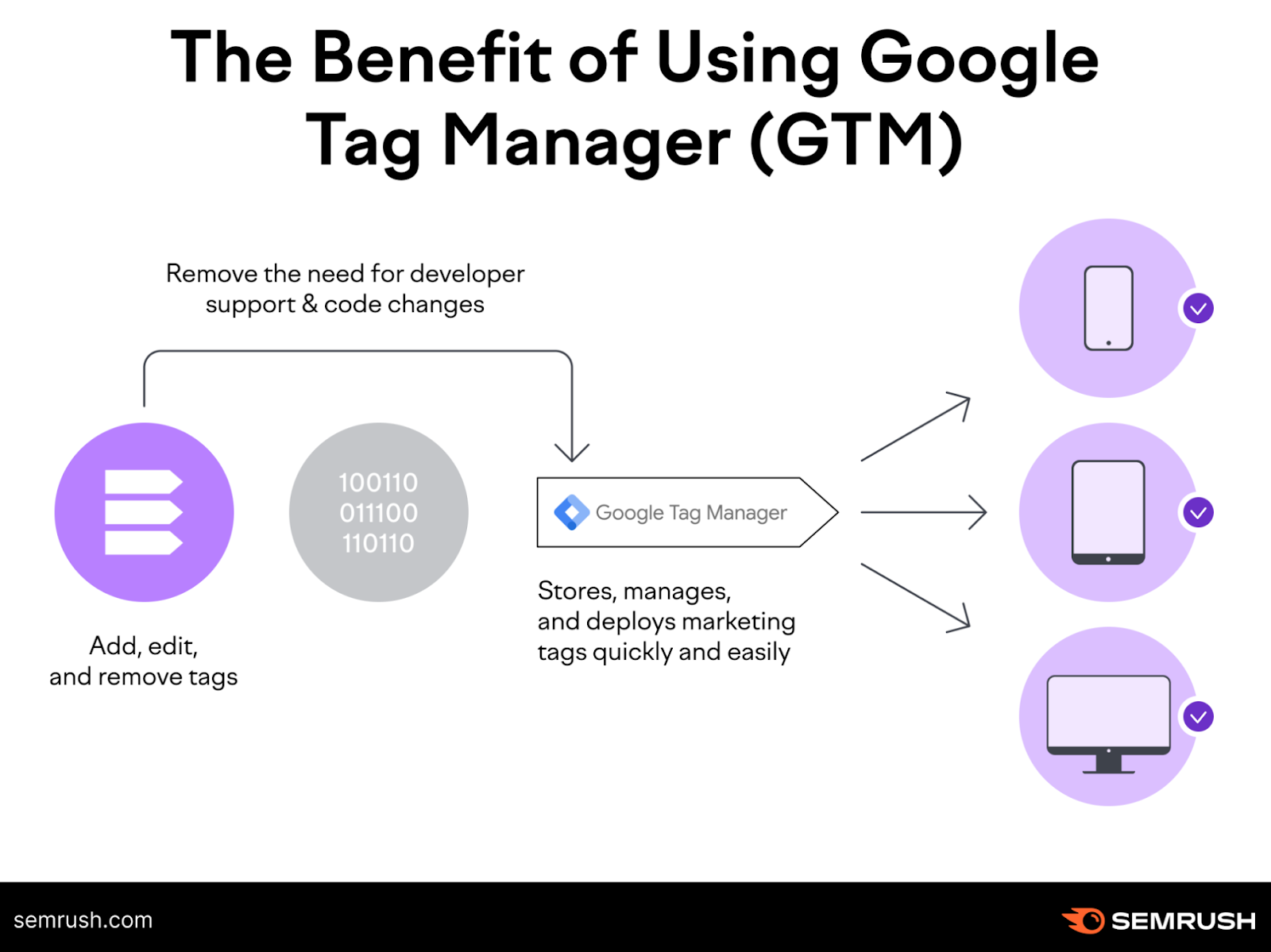
The problem with this approach is it can’t measure people who manually dial your number while on your website. You have two other options to track these calls:
- Use a call-tracking service to generate a new phone number for your website that forwards to your main line. This makes it easy to separate website leads from other calls.
- Ask people as part of your regular call script where they found out about your dealership. Track this data and analyze it as part of your overall strategy.
Neither are perfect solutions, but they will help you track telephone conversations and understand how much your SEO efforts are paying off.
SEO is a reliable way of building automotive website traffic. But it’s a long-term endeavor. You can use Pay Per Click (PPC) to generate leads more quickly.
Automotive PPC can also complement your SEO strategy. You can use it to test which keywords have the highest conversion rates, for instance.
Setting up a simple lead generation campaign using Google Ads and putting some of your marketing budget behind it each month can result in quick sales growth.
The PPC process is similar to SEO for car dealers—start with keyword research. When you’ve chosen a collection of relevant keywords, you can then write ad copy based on these keywords and build out ad groups to target keyword clusters.
Google Ads allows for a lot of campaign customization. Try out methods like defining geographic parameters, building out a list of negative keywords (which won’t be targeted), and choosing the best time of day to serve ads.

With an iterative approach, you can gradually learn from the data and refine your campaign for performance.
Drive More Automotive Sales With High-Impact SEO
Organic search is a central part of the car-buying journey. Potential customers are searching for your products and SEO is the best way to get in front of them.
Using the 12 tips above, you can build an automotive website that’s geared for organic success.
With a strong mix of local SEO, technical refinement, and keyword targeting, you’ll be well on your way to dominating your search market.
Source link : Semrush.com
